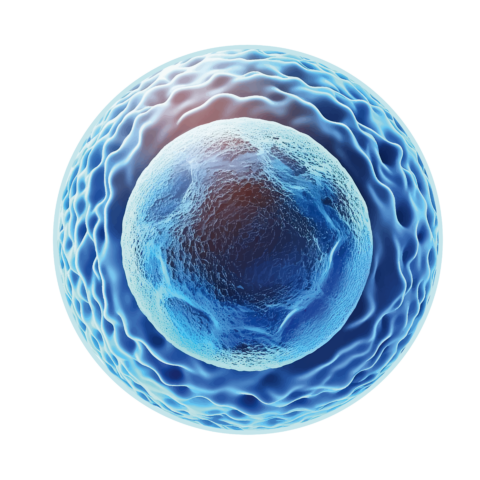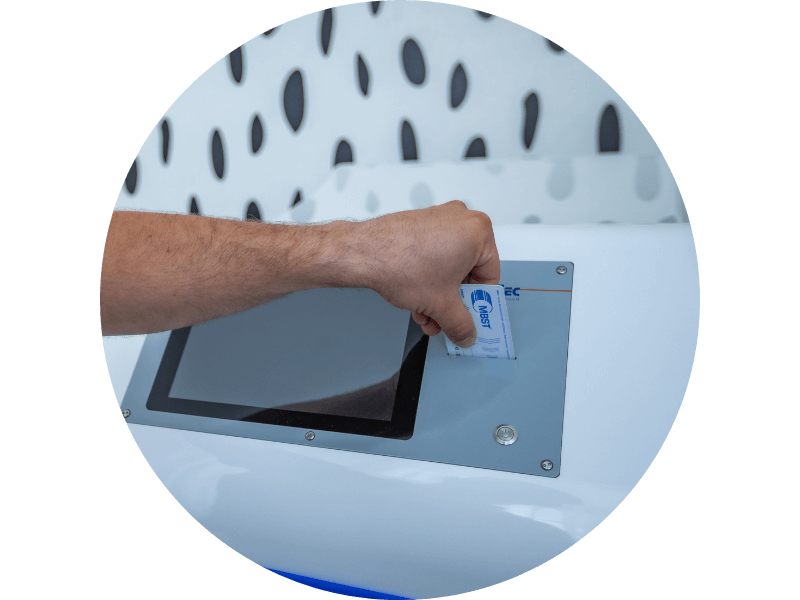The innovative MBST® therapy technology is designed to target malfunctioning or damaged cells in specific tissues. By stimulating these cells, MBST® encourages various biophysical processes that may activate the body’s natural healing processes, encouraging tissue repair and regeneration. MBST® can influence the chemical reactions within cells. By affecting how cells communicate, it may positively impact inflammatory responses and help reduce pain.
MBST® uses the physical principle of magnetic resonance to work directly at the cellular level, aiming to stimulate the regeneration of damaged tissue. Under magnetic resonance conditions, hydrogen protons absorb energy and release it back into the surrounding tissue.
Scientific data suggests that MBST® can trigger various biophysical processes, activating regenerative, anti-inflammatory, and pain-relieving effects.*


MBST® technology uses magnetic resonance, the same physical principal as MRI, a gold standard in orthopaedic diagnostics. The human body is made up of approximately 70% water, so there are huge numbers of hydrogen protons in the tissues. Magnetic resonance is created using a combination of magnetic fields and high-frequency impulses.
Under magnetic resonance conditions, hydrogen protons in organic tissue are stimulated, absorbing energy and causing measurable changes in their biophysical properties. In MRI, this data is used to create images for diagnostic purposes.
MBST® works by harnessing the magnetic resonance effect, where hydrogen protons release part of the energy they previously absorbed when an impulse is turned off. Scientific data shows that MBST® treatment can influence different processes in the body, possibly helping to stimulate and support the body’s natural healing.*
The main difference between MRI and MBST® is that MBST® is not designed to produce images of the inside of the body. The strong magnetic fields and gradient coils used in MRI are only required for image generation. These gradient coils create loud noises, which many patients find uncomfortable during an MRI scan. Since MBST® does not generate images, neither strong magnetic fields nor gradient coils are needed. As a result, MBST® therapy devices are not designed like the narrow MRI tubes but provide much more open space, and the treatment is almost completely silent.
Body tissues have different features and characteristics. During the development of MBST®, the different parameters of cartilage, bone, muscles, tendons, ligaments, discs, nerves, and skin were carefully studied. These parameters determine the most effective way to stimulate each type of tissue using magnetic resonance.
This allowed for the creation of therapy sequences tailored to each specific type of tissue. These frequencies are programmed onto the MBST® therapy card and transferred to the therapy device. The tissue-specific sequences aim to stimulate the maximum number of hydrogen protons in the targeted tissue during treatment.

1 Steinecker-Frohnwieser et al. 2014, J. Orthop. Rheum., 9/2014 | 2 Steinecker-Frohnwieser et al. 2018, Clin Exp Rheumatology 36, 294–301 | 3 Thöni et al. 2021, Chronobiology International, DOI: 10.1080/07420528.2021.1910288 | 4 Steinecker-Frohnwieser et al. 2021, Int J Molecular Sciences 22, 5959 | 5 Mann et al. 2022, Frontiers in Cellular Neuroscience 16, 859545 | 6 Temiz-Artmann et al., 2005, Methods Find Exp Clin Pharmacol 27(6), 391-394 | 7 Rad et al. 2024, Cells 13, 1544, DOI: https://doi.org/10.3390/cells13181544 | 8 Thöni et al. 2022, iScience 25, 105536
You are currently viewing a placeholder content from Google Maps. To access the actual content, click the button below. Please note that doing so will share data with third-party providers.
More Information